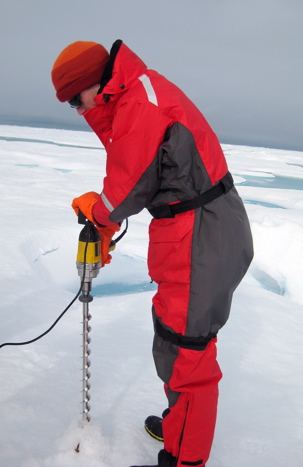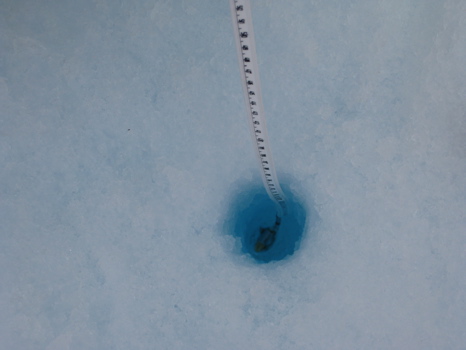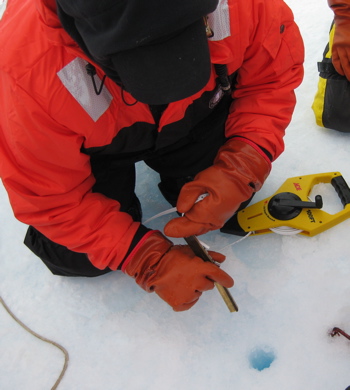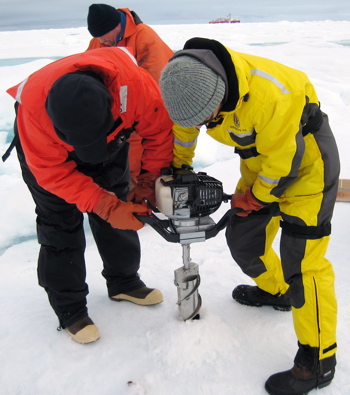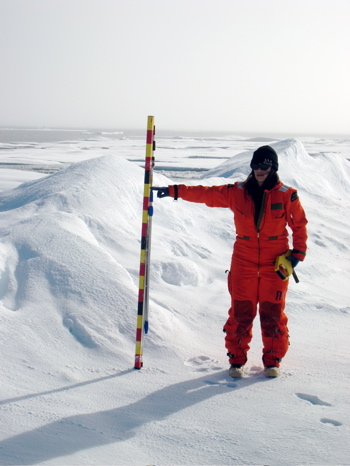Gerty WardAugust 4, 2008Studying ice means some rather cool (pun intended) field work, involving transport to remote places and using big power tools as well as some purpose-built devices. Alice Orlich (a undergraduate geography student at UAF) and Kristina Brown (a student at UBC) are out on the ice measuring, among other things, how thick the ice is. First, a hole must be drilled.
Brian is using a 2 inch auger blade. If the blade goes all the way into the ice and Brian still has not hit the water below, he will remove the engine, add another section of blade and continue on until he hits water, or needs to add *another* section of blade. When Brian is satisfied that he has drilled all the way through, the depth of the hole, the ice thickness, can be measured. Alice inserts a nifty tool called an ice toggle into the hole. The weight of the metal toggle pulls the tape measure through the hole into the water below. Once the toggle falls out of the hole into the water below, it rotates from the vertical to the horizontal. Alice can then give a gentle tug up until the toggle is up against the ice below, then read the tape measure to determine the ice thickness. Another sampling technique is coring.
With the corer, scientists can get a perfect vertical picture of the ice -- they can cut into the ice cream sandwich. They can then bring the core up and analyze it, getting information on temperature, salinity, dissolved nutrients, and other factors that can help determine the age of the ice, and perhaps how it was formed. Ice also can pile up on floe, and its height is measured with a multicolored stick. Each section is 10 cms. Information about the ice (the topping on the ocean water sandwich) allows us to further understand the Arctic today and how it may be changing tomorrow. All photos by PolarTREC teacher Gerty Ward unless indicated. Last updated: October 7, 2019 | |||||||||||||||||||||||||||
Copyright ©2007 Woods Hole Oceanographic Institution, All Rights Reserved, Privacy Policy. | |||||||||||||||||||||||||||


